- Understanding the Rowan-leaved Mountain Ash
- Physical Characteristics
- Habitat and Distribution
- Ecological Importance
- Conclusion
- The Diversity of Rowan-leaved Mountain Ash Varieties
- Appearance
- Growth Habit
- Fruit Characteristics
- The Ideal Growing Conditions for Rowan-leaved Mountain Ash
- Taking Care of Rowan-leaved Mountain Ash: Common Mistakes to Avoid
- Mistake 1: Improper Pruning Techniques
- Mistake 2: Inadequate Watering
- Mistake 3: Lack of Fertilization
- Mistake 4: Ignoring Pest and Disease Control
- Mistake 5: Neglecting Soil Quality
- Pruning Tips to Encourage Healthy Growth of Rowan-leaved Mountain Ash
- 1. Prune During Dormant Season
- 2. Remove Dead, Damaged, or Diseased Branches
- 3. Thin Out Crowded Branches
- 4. Maintain a Central Leader
- 5. Avoid Over Pruning
- 6. Prune to Enhance Aesthetic Appeal
- 7. Use Proper Pruning Techniques
- 8. Seek Professional Help if Needed
- Recognizing and Treating Common Rowan-leaved Mountain Ash Diseases
- Introduction
- 1. Fire Blight (Erwinia amylovora)
- 2. Powdery Mildew (Erysiphe spp.)
- 3. Leaf Spot (Venturia spp.)
- 4. Root Rot (Phytophthora spp.)
- Conclusion
- Enhancing the Beauty of Your Garden with Rowan-leaved Mountain Ash
- Why Choose the Rowan-leaved Mountain Ash?
- Caring for Your Rowan-leaved Mountain Ash
- Conclusion
- Attracting Birds with the Nutritious Rowan-leaved Mountain Ash Berries
- Benefits of Rowan-leaved Mountain Ash Berries for Birds
- How to Attract Birds with Rowan-leaved Mountain Ash Berries
- Other Attractants for Birds
- Conclusion
- Rowan-leaved Mountain Ash in Folklore and Traditions
- Protection Against Evil
- Symbol of Life and Vitality
- Medicinal and Culinary Uses
- Conclusion
- Questions and Answers:
- What is the rowan-leaved mountain ash?
- How tall does the rowan-leaved mountain ash grow?
- Where is the rowan-leaved mountain ash native to?
- What type of soil does the rowan-leaved mountain ash prefer?
- How often should I water my rowan-leaved mountain ash?
- When is the best time to prune the rowan-leaved mountain ash?
- Are there any common pests or diseases that affect the rowan-leaved mountain ash?
- Videos: How To Fix these 3 Major Hair Color Mistakes
Rowan-leaved mountain ash, scientifically known as Sorbus aucuparia, is a species of small deciduous tree native to Europe and parts of Asia. It is a member of the Rosaceae family and is closely related to other fruit-bearing trees such as apple and pear.
This tree is known for its beautiful foliage, with leaves that resemble those of the rowan tree. The leaves are dark green in color and have serrated edges, giving them an elegant and distinctive appearance. In the autumn, they turn a vibrant shade of orange, red, or yellow, creating a stunning display of colors.
However, the rowan-leaved mountain ash has had a long history of mistaken identity and mismanagement. In the past, it has often been confused with other species of mountain ash, leading to misplanting and mislabeling in nurseries and gardens. These mistakes have resulted in a decline in the tree’s popularity and limited its cultivation.
Fortunately, efforts are now being made to correct these mistakes and promote the rowan-leaved mountain ash as a valuable landscaping and ornamental tree. Its attractive foliage, showy clusters of white flowers in spring, and vibrant berries in late summer make it a standout addition to any garden or public space. With proper identification and management, this beautiful tree can thrive and contribute to the overall beauty and diversity of our natural landscapes.
In this article, we will explore the characteristics of the rowan-leaved mountain ash, its ecological importance, and the steps being taken to ensure its correct identification and cultivation. Join us on this journey of rediscovery and learn how to appreciate the unique qualities of this remarkable tree.
Understanding the Rowan-leaved Mountain Ash
The Rowan-leaved mountain ash (Sorbus aucuparia) is a deciduous tree belonging to the Rosaceae family. Also known as the European mountain ash or the rowan tree, it is native to Europe, including regions such as the UK, Scandinavia, and the Alps. However, it has also been successfully introduced to North America.
Physical Characteristics
The Rowan-leaved mountain ash is a medium-sized tree, typically reaching heights of around 15 to 30 feet (4.5 to 9 meters). It has a round crown, with a spread roughly equal to its height. The tree features a slender trunk and smooth, grayish bark that becomes fissured and scaly as it ages.
The pinnate leaves of the Rowan-leaved mountain ash are one of its distinguishing features. Each leaf is comprised of 9 to 13 leaflets that are finely toothed and have a serrated appearance. During the summer months, the leaves are a vibrant dark green color, before turning various shades of yellow, orange, and red in the autumn.
Habitat and Distribution
The Rowan-leaved mountain ash is commonly found in mountainous regions and rocky slopes, particularly in areas with cool climates. It prefers well-drained soils and can tolerate both acidic and alkaline conditions. The tree is often seen growing alongside other hardwood species such as birch and beech.
Its native range includes most of Europe, extending from the Arctic Circle in the north to regions as far south as the Mediterranean. It can be found at altitudes of up to around 7,500 feet (2,300 meters) in the Alps. In North America, it has been introduced in regions with similar climates, such as parts of Canada and the northeastern United States.
Ecological Importance
The Rowan-leaved mountain ash provides valuable resources for wildlife. Its small white flowers, which bloom in late spring, attract bees and other pollinators. The bright orange-red berries that appear in the autumn are an important food source for a variety of birds, including thrushes, blackbirds, and waxwings.
Additionally, the tree’s dense foliage provides nesting sites and shelter for many bird species. In some regions, the Rowan-leaved mountain ash is also planted for its ornamental value, as the vibrant fall colors can enhance the landscape.
Conclusion
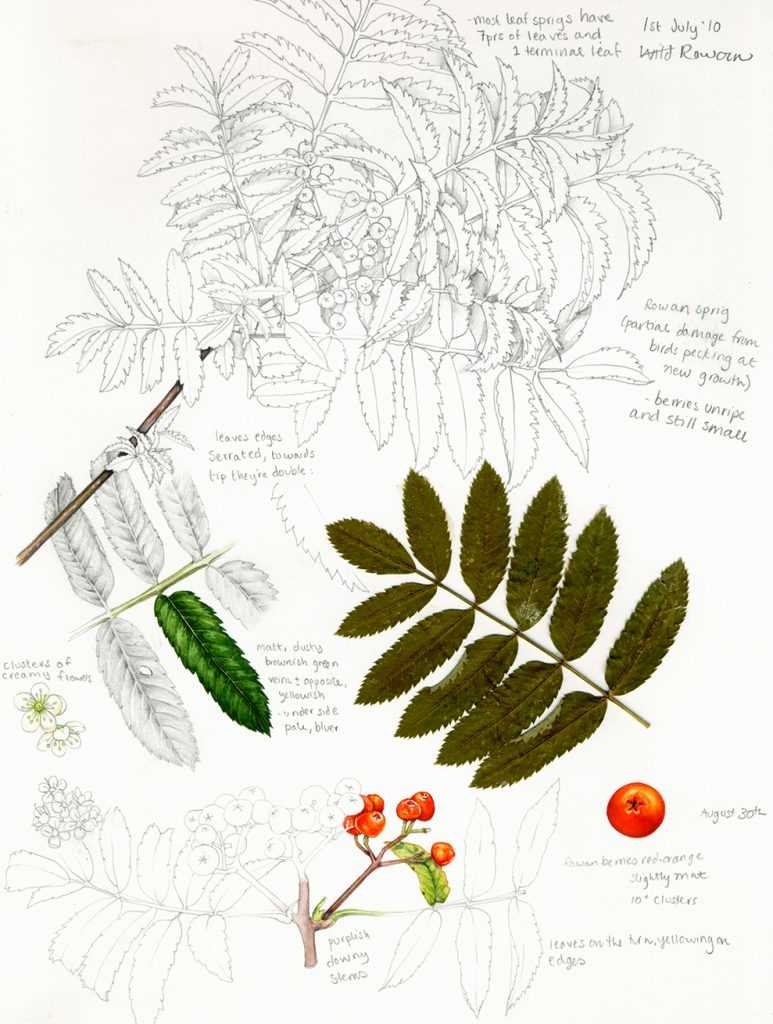
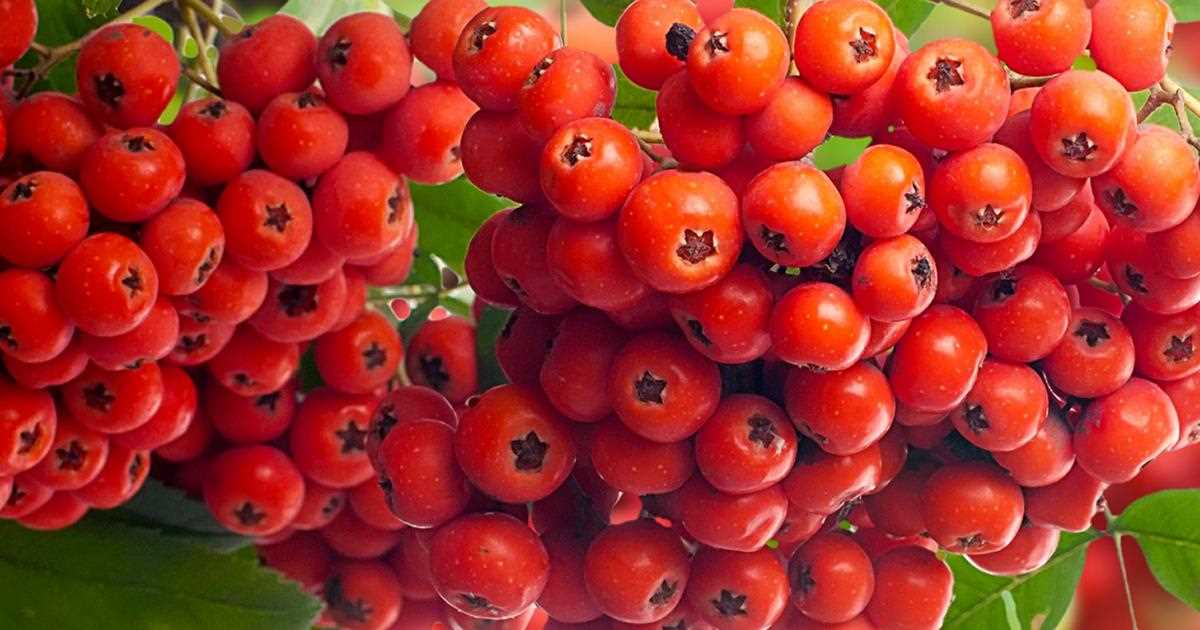
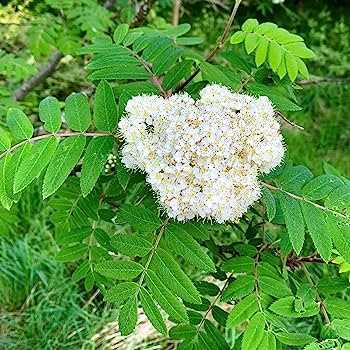
Understanding the Rowan-leaved mountain ash is important for those interested in its cultivation, conservation, or ecological importance. Its unique physical characteristics, habitat preferences, and ecological role contribute to its value as a species. By studying and appreciating this tree, we can work towards its protection and ensure its continued presence in our natural landscapes.
The Diversity of Rowan-leaved Mountain Ash Varieties
The rowan-leaved mountain ash, also known as Sorbus aucuparia, is a versatile plant that has a wide range of varieties. These varieties can vary in terms of their appearance, growth habit, and fruit characteristics.
Appearance
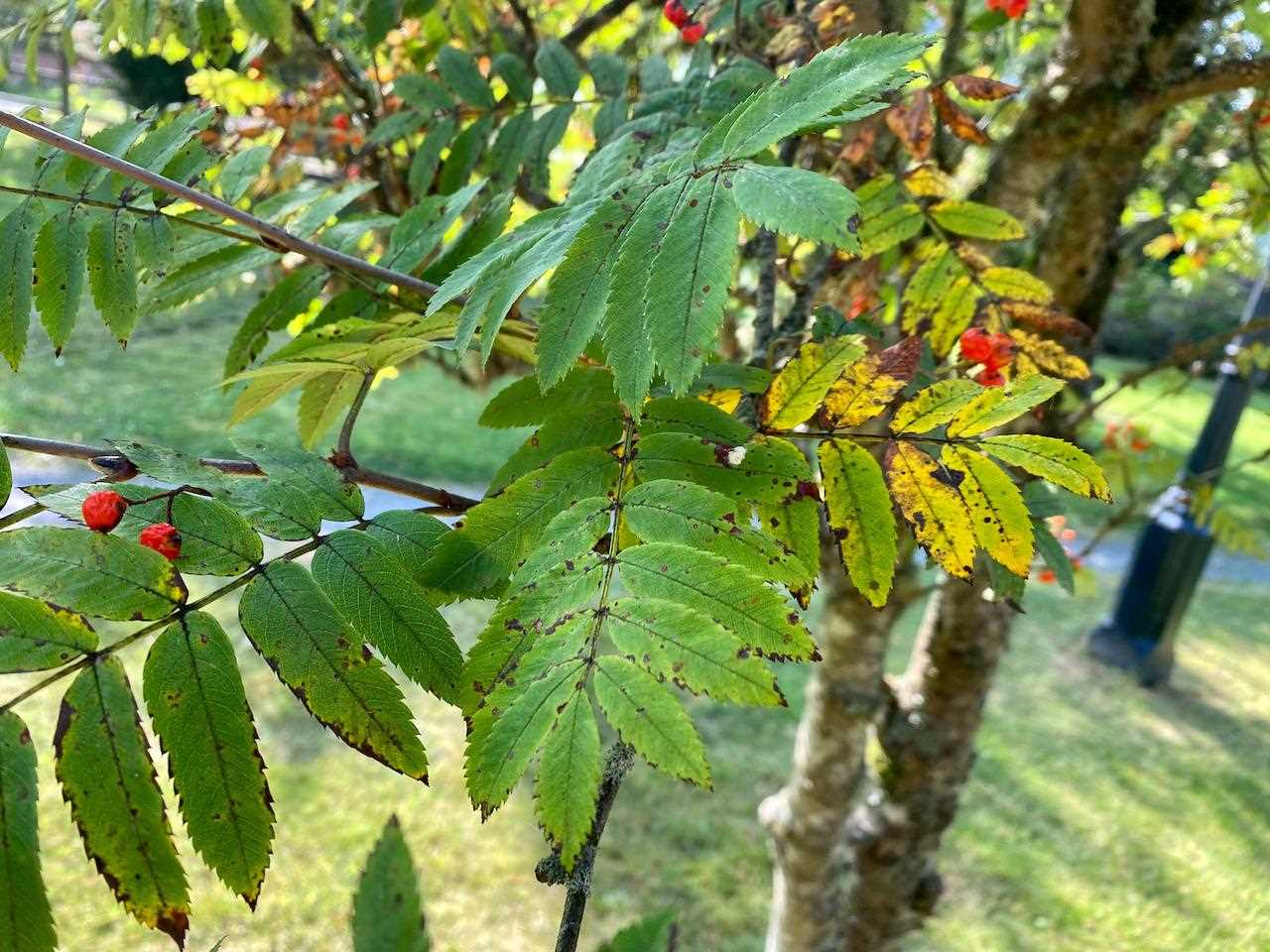
Rowan-leaved mountain ash varieties can have different leaf characteristics, which contribute to their overall appearance. Some varieties feature deeply lobed leaves, while others have less pronounced lobes. The color of the leaves can also vary, ranging from dark green to a vibrant red or orange in the autumn.
Additionally, the size and shape of the tree can differ among varieties. Some varieties are compact and shrubby, making them suitable for small gardens or landscaping purposes. Others can grow into tall and slender trees, reaching heights of up to 15 meters.
Growth Habit
The growth habit of rowan-leaved mountain ash varieties can also vary. Some varieties have a more upright habit, with a single dominant stem and a well-defined central leader. These varieties are often chosen for their ornamental value and are commonly used as focal points in landscape design.
On the other hand, some varieties have a more spreading habit, with multiple branches growing in various directions. These varieties can create a more informal and naturalistic look. They are often preferred for their ability to provide shade and habitat for birds and other wildlife.
Fruit Characteristics
One of the most notable features of rowan-leaved mountain ash varieties is their fruit. The fruits, known as berries, are typically orange or red in color and are an important food source for birds and other wildlife. Some varieties produce larger fruit clusters, while others have smaller berries.
The taste of the berries can also vary among varieties. Some varieties produce berries that are slightly bitter, while others have a sweeter flavor. These differences in taste can make certain varieties more suitable for culinary purposes, such as making jams or jellies.
Overall, the diversity of rowan-leaved mountain ash varieties allows for a wide range of options when selecting plants for different purposes. Whether you are looking for an ornamental tree, a wildlife habitat, or a fruit-bearing plant, there is a rowan-leaved mountain ash variety that can meet your needs.
The Ideal Growing Conditions for Rowan-leaved Mountain Ash
Growing rowan-leaved mountain ash (Sorbus aucuparia) can be a rewarding experience, but it requires the right conditions for the tree to thrive. Here are some ideal growing conditions to consider:
- Climate: Rowan-leaved mountain ash is well-suited to temperate climates with cool summers and cold winters. It can tolerate a range of temperatures, but prefers an average annual temperature between 50 and 70°F (10 and 21°C).
- Sunlight: This tree thrives in full sunlight, so it should be planted in an area that receives at least six hours of direct sunlight per day. Lack of sunlight can result in poor growth and reduced fruit production.
- Soil: Rowan-leaved mountain ash prefers well-drained, slightly acidic soil with a pH between 5.5 and 6.5. It can tolerate a variety of soil types, including loam, clay, and sandy soil, as long as they are well-draining.
- Water: While rowan-leaved mountain ash is moderately drought-tolerant, it requires regular watering, especially during dry periods. The soil should be kept evenly moist, but not waterlogged, as excessive moisture can lead to root rot.
- Fertilizer: It is generally not necessary to fertilize rowan-leaved mountain ash, as it can obtain nutrients from the soil. However, if the tree is showing signs of nutrient deficiency, a balanced fertilizer can be applied in early spring.
- Pruning: Regular pruning is not required for rowan-leaved mountain ash, but some light pruning can be done to maintain a desired shape or remove dead or damaged branches. Pruning should be done during the dormant season in late winter.
By providing the ideal growing conditions for rowan-leaved mountain ash, you can ensure its health and maximize its beauty in your garden or landscape. Following these guidelines will increase the chances of success and enable you to enjoy the benefits of this stunning tree.
Taking Care of Rowan-leaved Mountain Ash: Common Mistakes to Avoid
Mistake 1: Improper Pruning Techniques
One common mistake gardeners make when caring for Rowan-leaved Mountain Ash is improper pruning techniques. It is important to prune the tree correctly to maintain its health and appearance. Avoid the following mistakes:
- Pruning during the wrong time of the year
- Excessive pruning
- Pruning the tree too severely
- Not removing dead or diseased branches
Mistake 2: Inadequate Watering
Proper watering is essential for the health of Rowan-leaved Mountain Ash. Avoid the following watering mistakes:
- Underwatering the tree
- Overwatering the tree
- Not watering deeply enough
- Watering at the wrong time of the day
Mistake 3: Lack of Fertilization
Rowan-leaved Mountain Ash requires regular fertilization to thrive. Avoid the following mistakes when fertilizing the tree:
- Using the wrong type of fertilizer
- Over-fertilizing the tree
- Not fertilizing at the right time
Mistake 4: Ignoring Pest and Disease Control
Rowan-leaved Mountain Ash is susceptible to various pests and diseases. Avoid these mistakes in pest and disease control:
- Not inspecting the tree regularly for pests and diseases
- Ignoring early signs of infestation or infection
- Using ineffective or harmful pesticides
Mistake 5: Neglecting Soil Quality
The soil quality plays a crucial role in the health of Rowan-leaved Mountain Ash. Avoid these soil-related mistakes:
- Not testing the soil before planting
- Not providing adequate drainage
- Ignoring the pH needs of the tree
Pruning Tips to Encourage Healthy Growth of Rowan-leaved Mountain Ash
Proper pruning is essential for the healthy growth and development of rowan-leaved mountain ash trees. By following these pruning tips, you can ensure your tree thrives and maintains its natural beauty.
1. Prune During Dormant Season
The best time to prune rowan-leaved mountain ash trees is during the dormant season in late winter or early spring. This is when the tree is not actively growing, which reduces the stress on the tree and minimizes the risk of disease or insect infestation.
2. Remove Dead, Damaged, or Diseased Branches
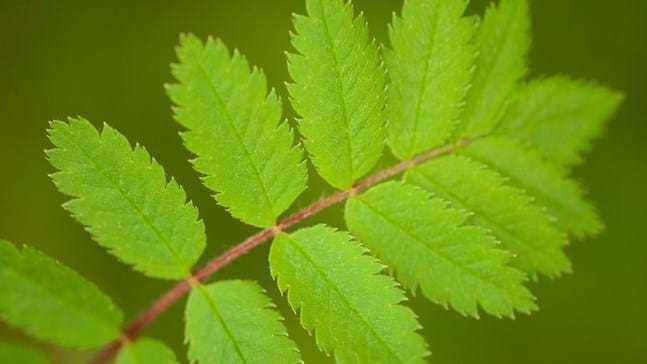
Inspect the tree for any dead, damaged, or diseased branches. These branches should be removed completely to prevent the spread of disease and improve the overall health of the tree.
3. Thin Out Crowded Branches
If you notice any branches that are crossing or rubbing against each other, it’s important to thin them out. This allows for better air circulation and sunlight penetration, which can promote the growth of strong and healthy branches.
4. Maintain a Central Leader
To encourage a strong and well-balanced shape, it’s important to maintain a central leader branch. This is the main vertical branch that grows from the top of the tree. Trim any competing branches that may grow too close to the central leader.
5. Avoid Over Pruning
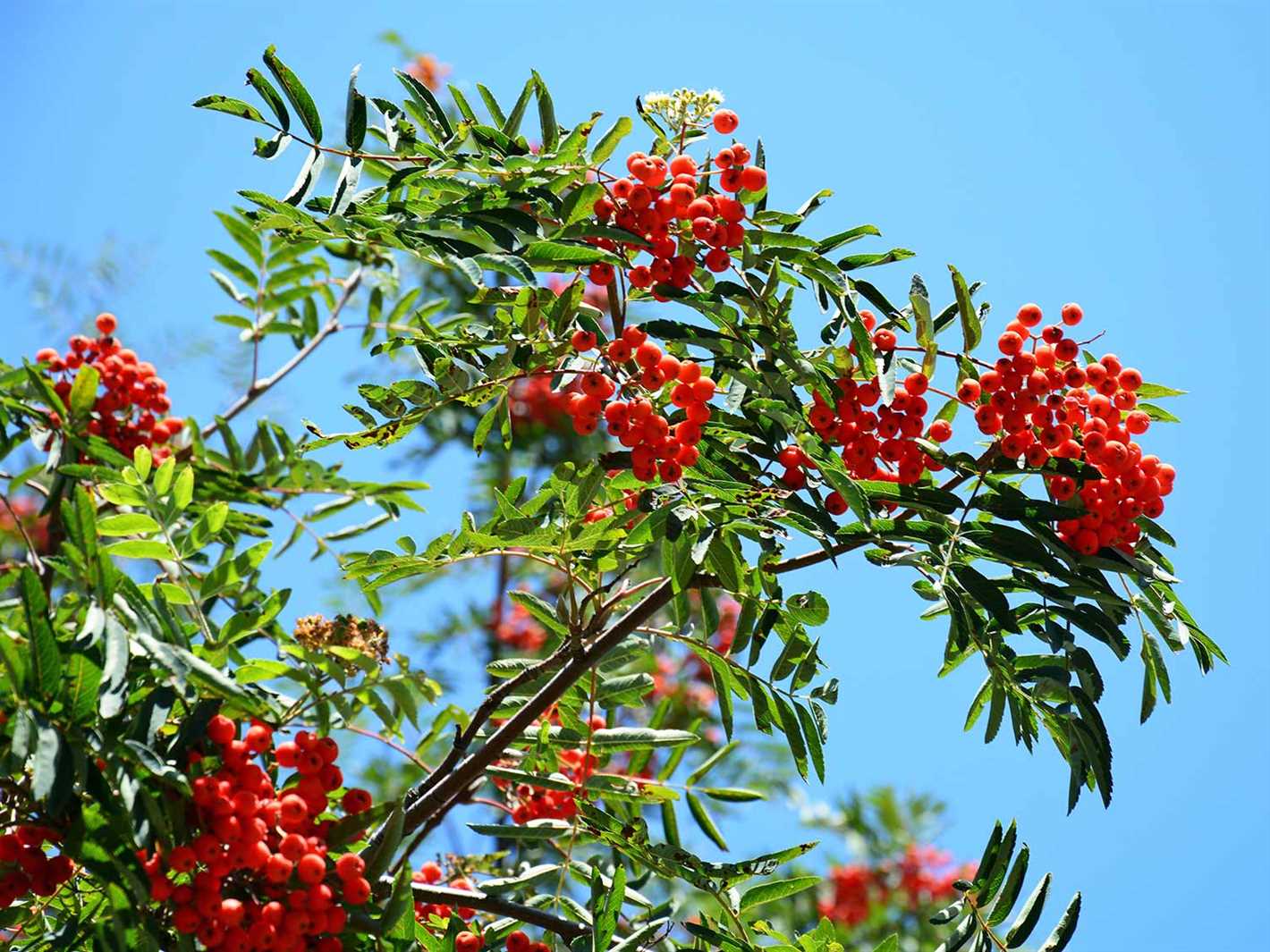
Avoid excessive pruning, especially when the tree is young. Over pruning can stunt the tree’s growth and make it more susceptible to diseases and pests. It’s best to only remove what is necessary for the health and structure of the tree.
6. Prune to Enhance Aesthetic Appeal
In addition to promoting the health of the tree, pruning can also enhance its visual appeal. Consider pruning to shape the tree and create a pleasing form. However, be careful not to overdo it, as excessive pruning can weaken the tree.
7. Use Proper Pruning Techniques
When pruning, make clean cuts just outside the branch collar, which is the swollen area at the base of the branch. Avoid leaving stubs, as they can attract pests and lead to decay. Use clean and sharp pruning tools to prevent the spread of diseases.
8. Seek Professional Help if Needed
If you are unsure about how to properly prune your rowan-leaved mountain ash tree, it’s advisable to seek professional help. An arborist can assess the health of the tree and provide guidance on the best pruning practices.
By following these pruning tips, you can ensure your rowan-leaved mountain ash tree grows healthily and remains a beautiful addition to your landscape for years to come.
Recognizing and Treating Common Rowan-leaved Mountain Ash Diseases
Introduction
The rowan-leaved mountain ash is a beautiful and hardy tree, but like any plant, it is susceptible to diseases. Recognizing and treating common diseases is crucial to maintaining the health and beauty of your rowan-leaved mountain ash. In this article, we will discuss the most common diseases that affect this tree and provide tips on how to identify and treat them.
1. Fire Blight (Erwinia amylovora)
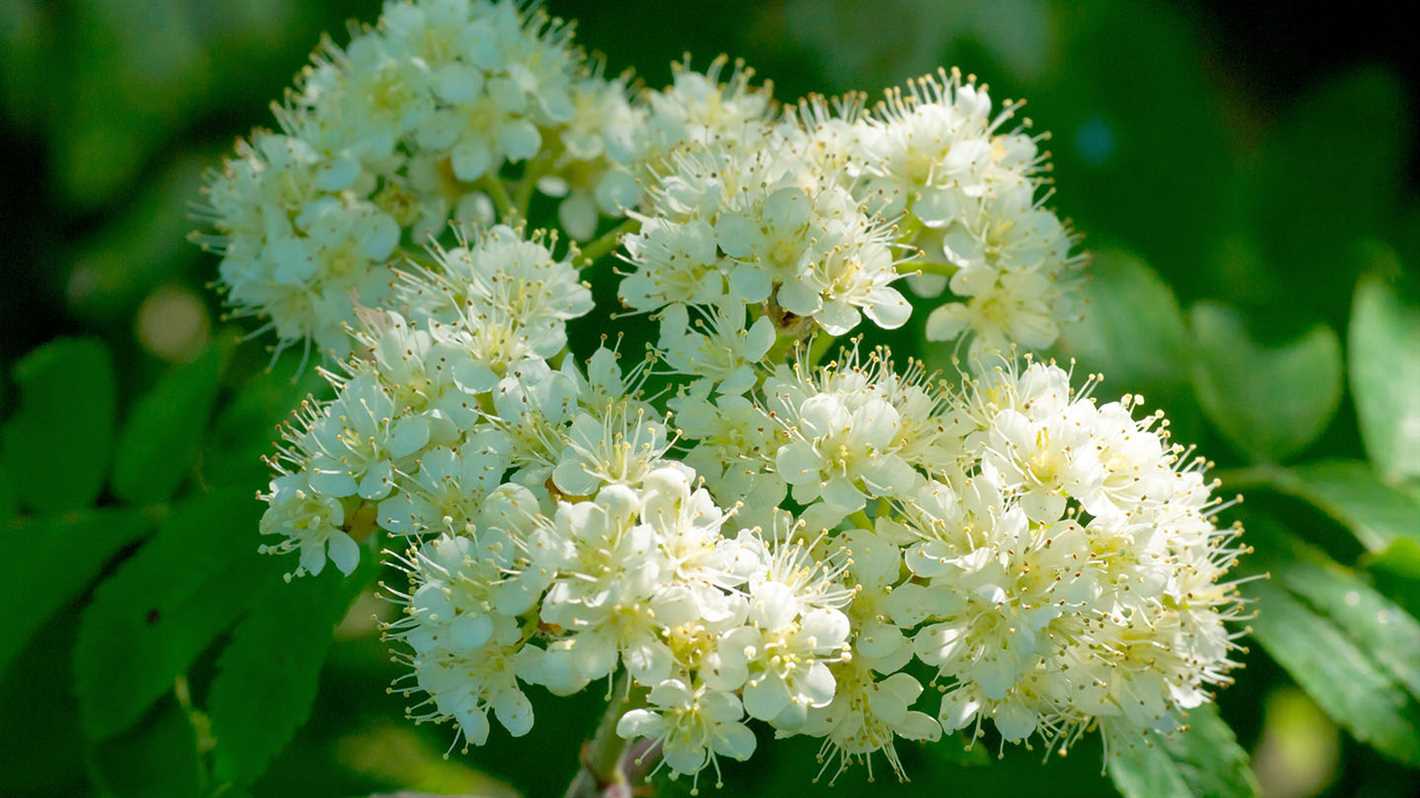
Fire blight is a bacterial disease that affects a wide range of plants, including rowan-leaved mountain ash. It can cause withering and blackening of blossoms, shoots, and branches. The disease spreads rapidly, especially during warm and humid weather.
To treat fire blight, prune and remove the affected branches to prevent further spread. Disinfect pruning tools between cuts with a solution of 10% bleach. Apply copper-based fungicides during the tree’s dormant period to prevent reinfection.
2. Powdery Mildew (Erysiphe spp.)
Powdery mildew is a fungal disease that appears as a white powdery coating on the leaves and stems of the rowan-leaved mountain ash. It thrives in humid conditions and can weaken the tree over time.
To treat powdery mildew, improve air circulation around the tree by pruning dense branches. Remove and destroy infected leaves and debris. Apply fungicides containing sulfur or potassium bicarbonate to control the fungal growth.
3. Leaf Spot (Venturia spp.)
Leaf spot is a fungal disease that causes dark spots to appear on the leaves of the rowan-leaved mountain ash. Severe infections can lead to defoliation and weaken the tree.
To treat leaf spot, clean up fallen leaves and debris to prevent the spread of spores. Prune and destroy infected branches or leaves. Apply fungicides containing chlorothalonil or mancozeb at the first sign of infection to control the disease.
4. Root Rot (Phytophthora spp.)
Root rot is a soil-borne fungal disease that affects the roots of the rowan-leaved mountain ash. It leads to the decay of the root system, resulting in wilting, stunted growth, and eventually death.
To treat root rot, improve the soil drainage by adding organic matter and avoiding overwatering. Remove and destroy infected plants. Apply fungicides containing phosphite to protect the remaining healthy roots from infection.
Conclusion
Recognizing and promptly treating common diseases is essential for the health and vitality of the rowan-leaved mountain ash. Regular inspection, proper hygiene practices, and timely interventions can help maintain a beautiful and disease-free tree for years to come.
Enhancing the Beauty of Your Garden with Rowan-leaved Mountain Ash
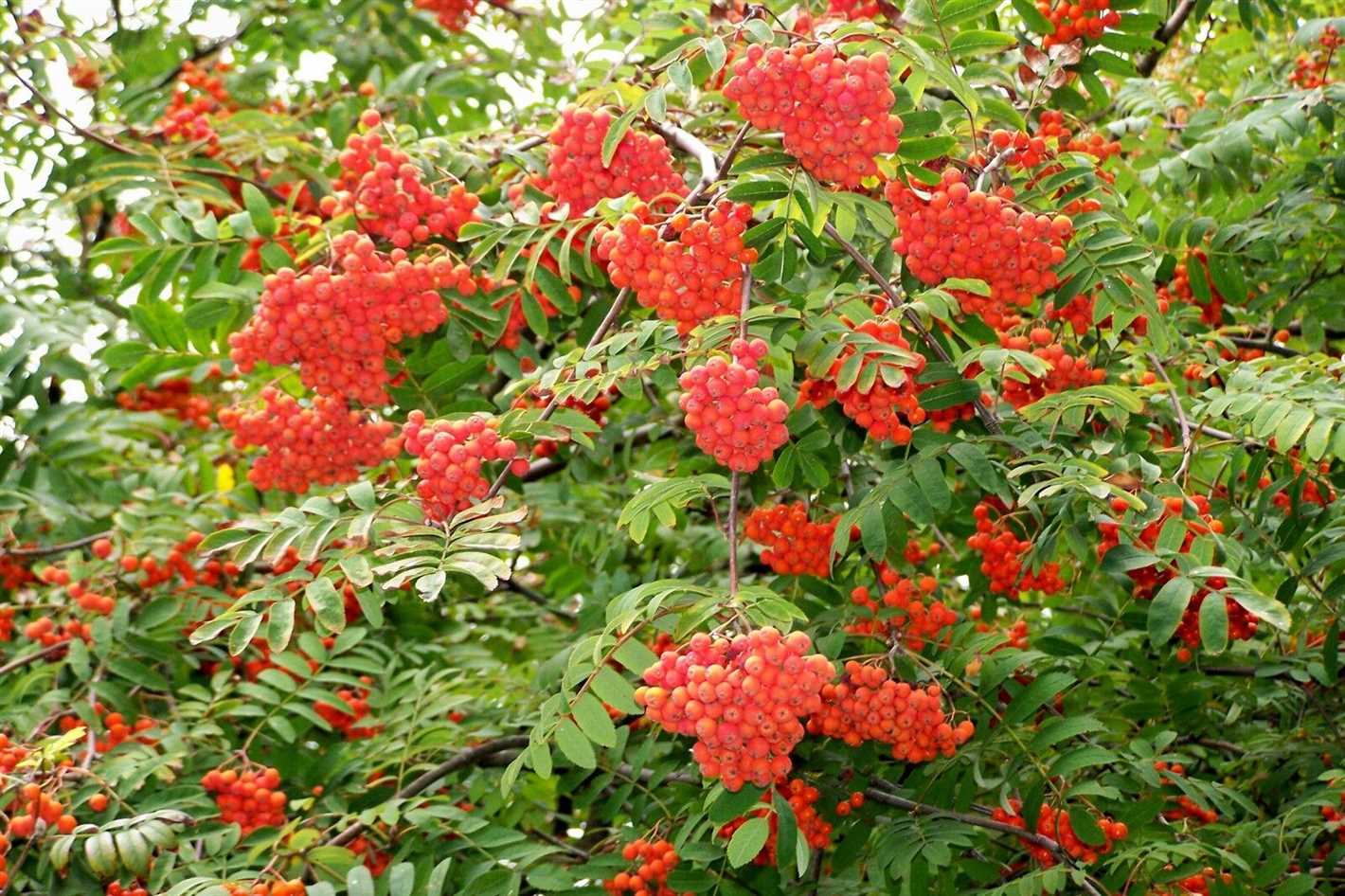
Are you looking to add a touch of elegance and beauty to your garden? Look no further than the rowan-leaved mountain ash tree. With its vibrant leaves and stunning white flowers, this tree is sure to enhance the aesthetic appeal of any garden.
The rowan-leaved mountain ash, also known as Sorbus aucuparia, is a small to medium-sized deciduous tree that is native to Europe and parts of Asia. It is known for its beautiful foliage and showy flowers, which bloom in late spring or early summer.
Why Choose the Rowan-leaved Mountain Ash?
There are several reasons why the rowan-leaved mountain ash is a fantastic choice for your garden. First and foremost, its striking leaves add a burst of color to any landscape. The leaves start off a vibrant green in the spring and summer, turning to shades of orange and red as autumn approaches. This tree truly shines in the fall when its leaves are in full color.
In addition to its stunning foliage, the rowan-leaved mountain ash also produces clusters of white flowers in the spring. These flowers attract pollinators such as bees and butterflies, adding even more life to your garden. After the flowers fade, small red berries appear, which can be enjoyed by birds and other wildlife.
Caring for Your Rowan-leaved Mountain Ash
While the rowan-leaved mountain ash is a relatively low-maintenance tree, it does require some care to thrive in your garden. Here are a few tips to help you ensure the success of your tree:
- Choose a location that receives full sun or partial shade. The rowan-leaved mountain ash prefers well-drained soil and can tolerate a wide range of soil types.
- Water your tree regularly, especially during dry periods. Ensure that the soil is moist but not waterlogged.
- Prune your tree in late winter or early spring to maintain its shape and remove any dead or diseased branches.
- Fertilize your tree once per year in early spring with a balanced fertilizer.
Conclusion
If you’re looking to enhance the beauty of your garden, the rowan-leaved mountain ash is an excellent choice. Its vibrant leaves, beautiful flowers, and attractive berries make it a show-stopping addition to any landscape. With proper care, this tree will thrive and bring years of beauty to your garden.
Attracting Birds with the Nutritious Rowan-leaved Mountain Ash Berries
Birds are attracted to the nutritious berries of the Rowan-leaved Mountain Ash tree. These small red berries provide vital nutrition for birds during the winter months when food is scarce. By planting Rowan-leaved Mountain Ash trees in your garden or local area, you can create a valuable food source for birds and help support their survival.
Benefits of Rowan-leaved Mountain Ash Berries for Birds
- The berries are rich in carbohydrates, fats, and proteins, providing essential energy for birds.
- They are high in vitamins and minerals, boosting the immune systems of birds.
- Rowan-leaved Mountain Ash berries are easily digestible, making them an ideal food source for birds.
- They attract a variety of bird species, adding diversity and beauty to your garden.
How to Attract Birds with Rowan-leaved Mountain Ash Berries
To attract birds to your garden using Rowan-leaved Mountain Ash berries, follow these steps:
- Plant Rowan-leaved Mountain Ash trees in your garden. They prefer well-drained soil and full sunlight, so choose a suitable location.
- Ensure the trees are mature enough to produce berries, which usually occurs after 3-5 years.
- Leave the berries on the trees throughout the winter months to provide a continuous food source for birds.
- Place bird feeders near the Rowan-leaved Mountain Ash trees to attract birds to the area.
- Keep the feeders filled with fresh birdseed and clean them regularly to maintain hygiene.
Other Attractants for Birds
In addition to Rowan-leaved Mountain Ash berries, you can also attract birds to your garden using the following:
- Water sources, such as birdbaths or small ponds, for birds to drink and bathe in.
- Nesting boxes or birdhouses to provide shelter and breeding grounds for birds.
- Diverse vegetation and plants that offer different food sources and habitats for birds.
- Native plants that attract insects, which are an important food source for birds.
Conclusion
By planting Rowan-leaved Mountain Ash trees and providing other attractants, you can create a bird-friendly environment in your garden. The nutritious berries of the Rowan-leaved Mountain Ash will help support the survival of birds during the winter months, and the presence of birds will bring joy and beauty to your outdoor space.
Rowan-leaved Mountain Ash in Folklore and Traditions
The Rowan-leaved Mountain Ash, also known as Sorbus aucuparia, has long been a symbol of protection and magical properties in folklore and traditions. Throughout history, this tree has held a special place in many cultures and has been associated with various beliefs and practices.
Protection Against Evil
In many European countries, Rowan-leaved Mountain Ash trees were believed to have the power to ward off evil spirits and protect against witchcraft. People would often hang branches of the tree on their doors or windows to keep away malevolent forces. It was said that if a witch tried to enter a home protected by the Rowan-leaved Mountain Ash, she would be unable to cross the threshold.
Additionally, the berries of the Rowan-leaved Mountain Ash were thought to have protective properties. It was common for people to wear necklaces or carry amulets made from the berries as a way to guard against harm and bring good luck.
Symbol of Life and Vitality
The Rowan-leaved Mountain Ash is often associated with life and vitality. In Celtic mythology, the tree was considered a sacred tree of life and was believed to be a gateway between the mortal world and the realm of the spirits. It was thought to bring blessings and prosperity to those who respected and honored it.
In Norse mythology, the Rowan-leaved Mountain Ash was also associated with life. It was believed that the first woman, Embla, was created from an ash tree, which some interpret as the Rowan-leaved Mountain Ash. This connection to the creation of life further solidified the tree’s symbolism of vitality and growth.
Medicinal and Culinary Uses
Aside from its mystical associations, the Rowan-leaved Mountain Ash has practical uses as well. The berries of the tree have long been used for their medicinal properties. They are rich in vitamins C and E, as well as antioxidants, and have been used to treat various ailments such as colds, digestive issues, and inflammation.
In certain culinary traditions, the berries have also been used to make jams, jellies, and liqueurs. The tart flavor of the berries adds a unique twist to these preparations and is enjoyed by many.
Conclusion
From its protective qualities to its symbolism of life and vitality, the Rowan-leaved Mountain Ash holds a special place in folklore and traditions. Its rich history and diverse uses make it a truly fascinating tree that continues to be cherished and respected by many cultures around the world.
Questions and Answers:
What is the rowan-leaved mountain ash?
The rowan-leaved mountain ash is a type of tree that belongs to the Rosaceae family. It is known for its distinctive rowan-like leaves and bright orange berries.
How tall does the rowan-leaved mountain ash grow?
The rowan-leaved mountain ash can grow up to 15 meters tall. However, its height can vary depending on the growing conditions and the specific variety of the tree.
Where is the rowan-leaved mountain ash native to?
The rowan-leaved mountain ash is native to Europe and is commonly found in mountainous regions. It can also be found in parts of Asia, including Siberia and China.
What type of soil does the rowan-leaved mountain ash prefer?
The rowan-leaved mountain ash prefers well-drained soil that is rich in organic matter. It can tolerate a wide range of soil types, but it grows best in slightly acidic to neutral soil pH.
How often should I water my rowan-leaved mountain ash?
The rowan-leaved mountain ash requires regular watering, especially during its first few years of growth. It is important to keep the soil moist but not waterlogged. Watering once or twice a week should be sufficient, depending on the weather conditions.
When is the best time to prune the rowan-leaved mountain ash?
The best time to prune the rowan-leaved mountain ash is during the late winter or early spring, before new growth begins. This will help promote healthy growth and shape the tree as desired.
Are there any common pests or diseases that affect the rowan-leaved mountain ash?
Yes, the rowan-leaved mountain ash can be susceptible to several pests and diseases. Some common pests include aphids, sawflies, and spider mites. Diseases such as fire blight and powdery mildew can also affect the tree. Regular inspection and appropriate treatments can help prevent and control these issues.







